NB This is the report I wrote after the first visit to Lagina in 2005.
In June 2012 I finally returned to Bodrum and whilst some things had changed … the road to Labranda for example is a complete mess due to lorries constantly transporting stones from the quarries … the tranquility of the temple is still there.
For my follow-up article elsewhere in WR-online, see here.
Hail and welcome!
***
“PFI Turkey – Hekatesia 2005”
Once upon a time… well this really does sound like a fairytale come true. In September 2004 I met a Turkish dance student at one of our Witches cafes. One thing lead to another and at Yule I met a girlfriend of his who lives in Istanbul. We chatted and ended up having this wonderful idea of setting up PFI Turkey. Many hours of Instant Messaging and emailing ensued but by February we had a website in Turkish, www.tr.paganfederation.org.
During our conversation I had expressed an interest in visiting Turkey and Atheneris just happened to mention some festivals, which are still celebrated in Turkey that are not particularly Islamic. Now I should mention immediately that Turkey is secular and there is complete separation between state and religion. At least this is their vision and in many respects Turkey is far more secular than most western so-called democracies, but that is another story!
To hear of pagan festivals still being celebrated was new to me and of course I wanted to hear more. Atheneris mentioned one very small village festival being held near to the site of the Temple of Hekate, Lagina. Lagina is not well known, partly because excavations have only been restarted recently – in 1999. The first excavations were made in the later 1800’s.
(Lagina)
I expressed interest and so she started making inquiries. After many months of meetings with local archaeologists, the mayor of the village, tour guides and historians, plus booking flights and arranging accommodation Flora and I met in Bodrum, Western Turkey.
Our first few days were spent in visiting the local attractions in Bodrum or Halicarnassus (Bodrum’s ancient name), including the Castle of St. Peter. This was built on the ruins of an older castle, now known to have been built by the Dorians around 1100 BC.
Perhaps the most famous ancient monument in Bodrum however is the Mausoleum, one of the Seven Wonders of the World.
Overlooking the Mausoleum are the ruins of an ancient theatre, which offers a marvellous view over Bodrum and the Castle.
On another occasion we had a private tour to Euromos where we saw the Temple of Zeus, followed by a visit to Didyma and the Temple of Apollo. Not far from Didyma is the ancient city of Miletos, where we saw a marvellous example of a theatre.
We were later joined by our guests from the UK and made a return journey to visit the wonderful Temple complex at Ephesus. Semih our tour guide on this particular occasion told us much about Turkish and Anatolian history. He also told us about the ‘Hellenisation of Turkey’ and the settlement of Greeks in this area, which explains why many of the best examples of Greek architecture are in fact in modern Turkey. One begins to understand how important Anatolia is to European history – it is veritable open-air museum here. But so far we had visited the more touristy areas. And I could also spend much more time writing about these wonders.
Ephesus too is another one of the ‘Seven Wonders of the World’…
(Ephesus)
However the aim of this visit was about to unfold. We picked up our last guests – three pagan friends from the US – at Bodrum Airport and journeyed to Turgut, via Milas, north-east of Bodrum.
Fred Lamond, who had also joined us, continues the story:
“(I was)… just in time to join the main party in the minibus to Turgut Village on 16 September, with a visit to an opencast coal mine on the way, where many archaeological artefacts are frequently found.
(Turgut dancers)
The Hekatesia festival, that has been taking place since 2000, is mostly a video show for the benefit of the inhabitants of neighbouring Turgut village of who Hekate was in Ancient Anatolia and of the progress of the excavations, but included this year for our benefit a splendid procession by the students of an Istanbul drama school. This was unfortunately spoiled by a swarm of press photographs that accompanied the procession taking constant photographs from all angles as it proceeded.
The day after the official festival, on the evening of 17 September, our group was allowed to hold a private ceremony in the temple ruins, which in the bright moonlight had a remarkable atmosphere.
(Sanctuary of Hekate, Lagina)
The place was full of power despite not having been used as a place of Pagan worship for 1600 years. The 1000 previous years of continuous worship must have left their mark, or else it is a natural power spot and was chosen for that reason as the location of a temple to Hekate. After linking in a circle we each of us went individually to address our own personal prayers to Hekate, and I felt a very strong personal contact with the Goddess.”
(Statue of Hekate)
Indeed the Carian Hekate is quite different to the Hellenic or Shakespearian image of Hekate many of us are used to. However the image we saw was quite different. Pictured as a young maiden carrying one and sometimes two torches, she is the one who lights the way.
From Albert Henrichs:
“Hectare was a popular and ubiquitous goddess from the time of Hasid until late antiquity… she emerges by the 5th cent. As a more sinister divine figure associated with magic and witchcraft, lunar lore and creatures of the night, dog sacrifices and illuminated caves, as well as doorways and crossroads.”
From Hekate’s History:
“Hekate probably originated in the mythology of the Karians in southwest Asia Minor, and was integrated into Greek religion around the sixth century BCE. However, there is evidence that Hekate evolved from the Egyptian midwife goddess Heqit, (alternatively spelt ‘Heket’ or ‘Hekat’.) The frog headed goddess Heqit assisted with the daily birth of the Sun and was associated with the apparently magical germination of the seemingly lifeless corn seed. In pre-dynastic Egypt the matriarch and wise woman of the tribe was called the ‘heq’. It’s interesting to note that Hekate is associated with childbirth.”
See also the article ‘Triads and Trinities – The origin of the Modern Pagan Goddess’ by Prudence Jones, updated and published in Wiccan Rede Lammas 2005.
She writes of the early Hekate:
“Inscriptions from the 3rd–2nd century BCE in the adjoining city, Stratonikeia, describe her as ‘Greatest Goddess’; she is paired with the local Zeus, himself called ‘Greatest God’; and like Cybele in Phyrgia she was served in her temple by sacred eunuchs. Images there show her as a single figure, seated on a throne, or sometimes with lions, often standing, her veil inflated in a crescent-shaped nimbus above her head. We may suspect that a goddess so richly honoured by the all-powerful Olympian Zeus was a local ruling goddess who was being ‘bought off’ by a newly-dominant priesthood, and so it appears to be. Hesiod’s father came from the neighbouring province, Lycia in Asia Minor, which had been colonised by Greek-speaking peoples as recently as the ninth and eighth centuries BCE, and so the importance of the ancestral deities was no doubt vivid in the memory of his son the poet.
Hekate’s original name, Akta, is Carian, its meaning unknown, but to the average Ancient Greek its naturalised form would recall hekaton, one hundred, and thus with her abundant riches she was, so to speak, the goddess of millionaires, invoked by everyone for prosperity and good fortune in all areas of life (Theogony 416 ff.). As the goddess at home in all worlds (the three levels of heaven into which the sun and planets moved throughout their cycles, called the Three Ways in Babylonian astro-cosmology), she was goddess of the roads, guardian of the gates and guarantor of safe conduct. She was called ‘Protectress’ and Lady of the Ways, and sometimes shown holding a key.”
Her Temple at Lagina was a thriving centre and was linked by a processional way to Stratoniceia
“The city was named after Stratonice, the wife of Seleucus Nicator who forced the old king to divorce in order to marry his son Antiochus I Soter who founded the city in honour of his erstwhile step-mother and present wife. The most significant Hellenistico–Roman vestiges are the Entrance Gate, the Gymnasium, the Bouleuterion located at the centre of the city, the Theatre.
The 11 km/ 7 miles long Sacred Road, lined with tombs and starting from the entrance gate, connected Stratoniceia, which was the political centre, to Lagina Sanctuary, the prominent religious centre of Caria dedicated to Hecate. This Anatolian goddess was Leto’s twin sister. She reigned over the air, earth and sea, and she was present at funerals to take care of the deads’ spirits. Oracles and witches were her priests. During religious festivals, a splendid ritual procession carried the key of the Temple of Hecate from Lagina to Stratoniceia.”
The Lagina Sanctuary, which was a prominent cult centre of the Carians is still famous today and is also known by the name of Leyne. Recent research has revealed that this region was inhabited from the Antique Bronze Age (3000 B.C.) on to the present. The Kings of Selecucid dynasty by virtue of great constructional efforts, built the Lagina sanctuary as a religious centre and the city of Stratoniceia, 11 km. away, was the political centre. At the Lagina sanctuary there are propylon (monumental gateway), the interconnecting Sacred Road, an altar (sacrificial and dipping place), peribolos (wall encircling the sanctuary), Doric stoa and the Temple of Hecate.
The sanctuary is surrounded by walls of about two meters in height, which also form the back wall of the stoa. The monumental entrance building, with three entrances and an apsis at the western end supported by four Ionian columns, is connected to the stoa with a door. From the monumental entrance gate to the altar, there are ten rows of steps leading to the stone-paved road.
The temple, encircled with five rows of steps, located on an Attic Ionian pedestal, with a single row of columns with Corinthian capital, is at the centre of the sanctuary. The temple is pseudo-dipteral with 8×11 columns, and is built in the Corinthian style.
The inscriptions at Lagina and on the walls of the Bouleterion at Stratoniceia reveal that those two cities were connected by a Sacred Road and during festivities a splendid ritual procession carried the key of the temple from Lagina to Stratoniceia
And on the website http://www.mugla-turizm.gov.tr/en/14120.asp we read:
On the remaining gate there is an inscription, which mentions Augustus having restored it in 27 BC. The temple was built according to Hellenistic fashion of the time in the Corinthian style, though interpreted in a modernist manner by the founders of Stratonikea, the Seleucids, who especially used it in the building of this temple. The father of Turkish museums, Osman Hamdi Bey, carried out excavations at Lagina between 1891-1893. The inscriptions found were taken to the Istanbul Museums of Archaeology. Today excavations are being carried out under the direction of Professor Dr Ahmet A. Tırpan. During recent excavations the architectural portions of the temple were put in an orderly fashion, the propylon was dug up and totally unearthed and a so far undefined sacred structure was discovered.
We were very fortunate to meet Dr. Tirpan and his archaeological team. He has been at the Lagina site since 1999. The video and presentation he gave on the Friday evening was interesting to watch. They are the first Turkish scientists to have excavated a sacred site. Usually it has been the British, German, Swedish who have excavated in Turkey … and taken prize findings to the respective museums. Famous examples are the Gate of Miletos and the Pergamon Altar in Berlin. It is important to the Turkish people that their own scientists are now in charge and that artefacts are kept in Turkey. But this does not prevent cultural exchanges of course.
After leaving Turgut we visited the Museum at Milas, a small but lovely museum opened in 1987. There are many statues found for example at Stratonikea, in the 1500 m2 garden.
(Milas Museum)
(Gladiators, Milas Museum)
In the afternoon another ‘wonder’ was waiting for us at Labranda. Again joined by a processional way – this time 20 kms from Milas – the climb up the mountain path must have been strenuous for the ancient pilgrims. The view from this ‘honey country’ was breathtaking. I have been amazed at how green this area of Turkey is. With a Mediterranean climate one would have expected everything to have been brown and burnt by now – in late summer. But no, the greenness of the countryside was unbelievable.
I should mention one other eye-opener. I had always thought that the sacred double-axe, the labrys was a Minoan symbol. However it appears that THE ancient symbol for Karia is the labrys. It was no surprise then to find out that Zeus of Labranda carried a double axe.
“Labranda, which is the holy area of Zeus Labraundos, is in ancient Karia (South western Anatolia), 14 km north eastern of Mylasa city to which it is affiliated. The most ancient findings belong to the year 600 BC. The area that has been used as holy area in 6th and 5th centuries and then as temple terrace consisted of a single, small, artificial terrace. A war took place in the holy area in 497 and Karia army has been defeated by the Persian army with its alliances.
4th century BC is the most important period of the temple. At the times of the satraps named Mausolos (377 – 352 BC) and Idrieus (351 – 344 BC), this place gained a new appearance. In 355, during the sacrifice festival in Labranda, Mausolos escaped from an assassination towards him at the last moment.
(Labranda)
Buildings such as a series of artificial terraces here, one or two entrance buildings, a small Dor building (probably a fountain building), monumental stairs, two large feast halls (androns), shed building (named as oikoi), Stoa and Zeus Temple surrounded with columns must be constructed after this event. With the death of Idrieus in 344, such works have been stopped. Because of the big fire disaster that took place in 4th century BC, the holy area has lost its feature of being a cult place.
The excavation works here have been started in 1948 by A.W.Persson and are continuing with intervals since that time. The current excavations are being executed by P. Hellström.
The access from Mylasa to the holy area had been provided via the holy road having a width of 8 m. The laying traces on this road can be seen even today. Access to the area had been provided with one of the two entrance buildings (propylon). These were impressive passage doors made of Milas marble, having two columns and Ionian frontons on each side.
The building called as ‘Dor building’ was located at just east of the southern propylon building with its irregular formation close to a rectangle. It is a building that is turned towards north, has four columns, a front courtyard, a marble side and is in Dor style. It absolutely had the function of a fountain building. This small building has been included in the bath complex.
200 m west of the holy building lies the stadium whose back side is reinforced with a retaining wall. The starting and end stones of the competitions are still existing at both ends. It is supposed that some competitions have been made here during the feast of 5 days made in the holy area.” (http://www.kultur.gov.tr/EN,39740/labranda.html)
However the most interesting spot for me was at the sacred spring, which still exists today, flowing under a huge rock that has spilt down the centre. As Genghis, our minibus driver noted, “here the sacred water springs form the earth. The sacred bee drinks the sacred water to make the sacred honey…” and indeed the honey was delicious.
(Sacred well at Labranda)
After Labranda we made our way back to Bodrum where we spent the last couple of days ‘recovering’ from our pilgrimage. No one wanted to leave, nor say good-bye to our Turkish friends. And now looking at my Artemis statue and blue and yellow evil-eye armband and other souvenirs of Karia, I am sure we will be back.
Fred added in his report:
“Turkish official interest in their pagan past, and tolerance for contemporary neo-Paganism contrasts very favourably with attitudes in France, where Paganism like all new religions is viewed with suspicion as a ‘sect’ and can be libelled with impunity, or Greece where Orthodox Christianity is regarded as so much part of the Greek national identity that any alternatives are implicitly if not always explicitly actively discouraged.
Turgut village, where we stayed, gave me a sense of déjà vu although this was my first visit to Turkey. And then I remembered Marcel Pagnol’s films of the 1930s describing life in the Southern French villages of the Midi. People generally assume that Turkish secularism is limited to the sophisticated elites of Istanbul and Ankara, and that the countryside must be still strongly Islamic.
But with 1600 inhabitants and no hotel Turgut fulfilled most of the requirements of a backwoods village. Yet the only women wearing traditional Islamic dress with a scarf around the head were a few older women. Younger people of both sexes wore European style jeans and skirts. The only young women wearing Islamic dress I saw later in Istanbul and was assured by that they were Arab tourists.
All this removed any doubts that I had about Turkey’s claim to be part of European culture. Of course the picture may be different in Eastern and South-Eastern Anatolia, but then so were Sardinia and Sicily equally different from the Northern Italian mainland 50 years ago and still are.
After we all said our goodbyes on 20 September I spent two days as a tourist in Istanbul, where I had also never been before.”
It is hoped that we will repeat this visit and arrangements are already being made for a return visit in 2006. Many thanks to Atheneris, Boran and Semih and all the PFI delegates who helped in making this a memorable visit.
Morgana.
For more information about future visits to Turkey/Lagina, please email us at morgana@paganfederation.org
General information about Pagan Federation International see www.paganfederation.org and PFI Turkey www.tr.paganfederation.org
Notes
Hekate’s history: http://hekate.timerift.net/history.htm
“Triads and Trinities – The origin of the Modern Pagan Goddess” by Prudence Jones, updated and published in Wiccan Rede Lammas 2005.
http://www.muglakulturturizm.gov.tr/belge/1-95819/bodrum.html
http://www.muglakulturturizm.gov.tr/belge/1-95829/yatagan.html
Photos of Lagina: http://www.fotografcilar.com/classic/Lagina/
Stratoniceia: http://www.guide-martine.com/aegean10.asp
Labranda: http://www.kultur.gov.tr/EN,39502/archeology.html
http://www.kultur.gov.tr/EN,39740/labranda.html
Photos by Alan & John and published with permission and thanks!!
NB Lagina is the ancient city, Northwest of Yatagan, which belongs to the Yatagan District. This district is part of Mugla, the province on the Aegean Coast of Turkey.

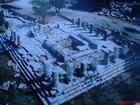
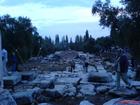
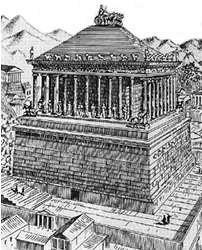
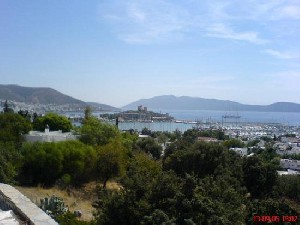
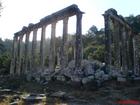
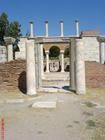
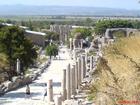
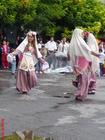

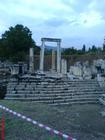
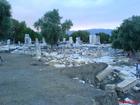
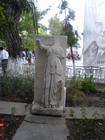
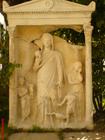
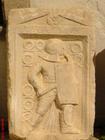
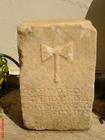

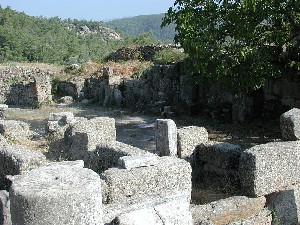
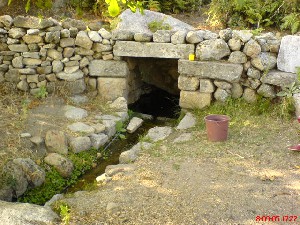
Thanks for your interesting blog. I may be going to Turkey in a year to accompany my Turkish friend who has to deal with some matters there. I am very interested in sites like Lagina!